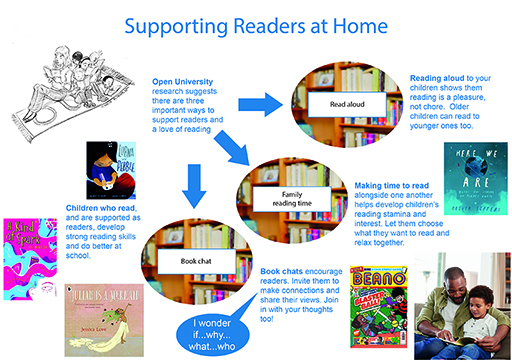5 Reading at home: mirroring RfP pedagogies
In Session 5, you read about the RfP pedagogy, which encompasses reading aloud, reading time and book talk in a social reading environment. This is also key, as Figure 1 denotes, for supporting readers at home.
In Session 5, you also read about the RfP pedagogy checkLIST which can help teachers ensure their practice is planned with the goal of developing children’s desire and motivation to read (Cremin, 2019). Pedagogies and practices in school that are learner-led, informal, social and with texts that tempt (LIST), have been found to be effective in motivating young readers by promoting positive attitudes and inspiring children to read more frequently.
It is noteworthy that the checkLIST model that is promoted in the classroom, is often implicitly discernible in children’s Reading for Pleasure at home. Their reading might involve a hobby magazine, a recipe, a video game blog or a novel, but it is clear that children’s home reading tends to be learner-led, informal, social and with texts that tempt.
Activity _unit8.5.1 Activity 2 Reflecting on reading at home
Listen to Audio 1 of an adult–child book chat in which 10-year-old Bruce talks about his reading at home. As you listen, make a note of the ways in which the reading Bruce describes is learner led, informal, social and with texts that tempt this young reader.

